USDA hardiness zones are designed guide for cultivation and landscaping. If we elaborate on the hardiness zone, it is more like a geographically designed area where a particular plant could survive.
Further, the ability to thrive well in the zone’s minimum temperatures is something which has been considered when designing the USDA hardiness zones.
In 1927 only, it was first published and later it was amended in 2012. USDA hardiness zones system comprises 13 zones. Those zones have covered the entire United states.
Those 13 zones have different minimum temperatures in each area. For example, If we take zone 1, Minimum temperature of zone 1 would be -50 degrees Fahrenheit to -60 degrees Fahrenheit.
On the other hand if we consider zone 13 , it will have a minimum temperature of 60 degrees Fahrenheit to 70 degrees Fahrenheit.
Further each zone has been divided into A and B due to overlap in temperatures for further clarification.
In fact, they have divided the zone into two 5 degrees Fahrenheit sections which gives an even more descriptive detail for each area. That is simply because certain areas could have more definitive low temperatures.
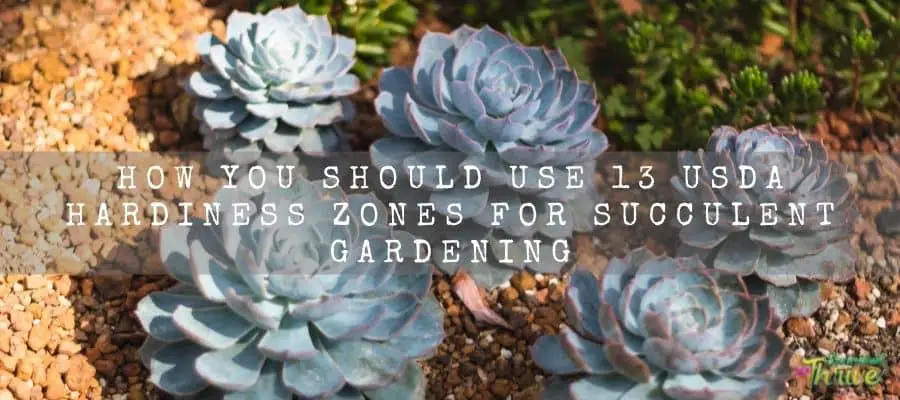
How USDA hardiness zones are divided?
This categorization has been first implemented by the United States department of agriculture.
America itself is a vast country where there is a wide array of weather conditions available across the country.
That is why it is important to identify what weather conditions are available in your area and then grow the succulents which would suit those conditions well.
Depending on that, it is important to grow them in areas where they will get those particular weather conditions.
In that circumstance USDA hardiness zones would be very useful. However, this has now been spread across the other nations as well and they also tend to refer to the USDA hardiness zones when doing their cultivation.
Description of each USDA hardiness zone
Zone 1a
The plants which could thrive well in this zone could withstand the harsh weather conditions.
In fact these Zone 1a succulents could withstand a lowest temperature of -60 degrees Fahrenheit to -55 degrees Fahrenheit (-52.5 degrees Celsius to -48.3 degrees Celsius).
Best examples for the succulents which could thrive well in zone 1a are Quaking Aspen, Net leaf Willow, Crowberry, and Pennsylvania Cinquefoil.
Zone 1b
Temperature range of -55 degrees Fahrenheit to -50 degrees Fahrenheit (-48.3 degrees Celsius to -45.6 degrees Celsius) is the lowest temperature that zone 1b succulents could thrive in.
Zone 2a
Zone 2a succulents could withstand a lowest temperature of -50 degrees Fahrenheit to -45 degrees Fahrenheit). (-45.6 degrees Celsius to -42.8 degrees Celsius). Rhodiola rosea (golden root) is a fine example for this.
Zone 2b
Further Zone 2b succulents could thrive well in lowest temperatures such as -45 degrees Fahrenheit to -40 degrees Fahrenheit (-42.8 degrees Celsius to -40.0 degrees Celsius).
Best example for succulent which could thrive well in the zone 2b is Rhodiola rosea (golden root)
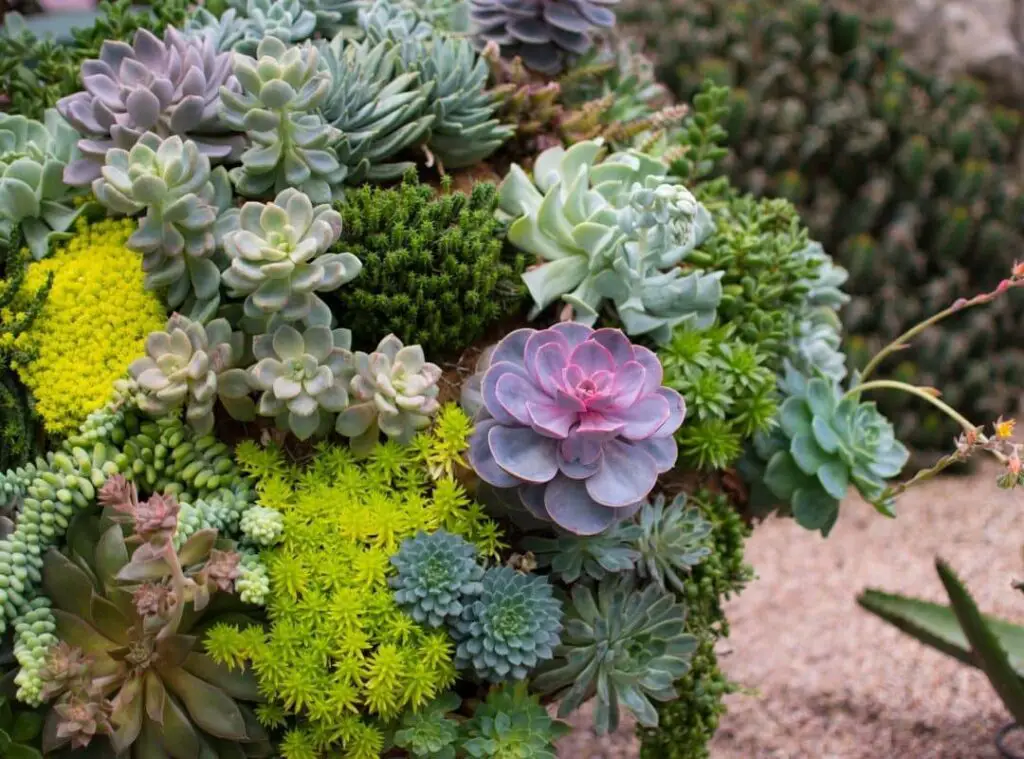
Zone 3a
A temperature range of -40 degrees Fahrenheit to -35 degrees Fahrenheit (-40.0 degrees Celsius to -37.2 degrees Celsius is the lowest temperature that zone 3a succulents could thrive in.
Some examples for zone 3a succulents are such as Hylotelephium Tatarinowii, Sedum Brevifolium (short lived stonecrop), Phedimus hybridus, Hylotelephium spectabile ‘meteor’, Sedum sarmentosum
Zone 3b
Zone 3b succulents could tolerate a lowest temperature of -35 degrees Fahrenheit to -30 degrees Fahrenheit. (-37.2 degrees Celsius to -34.4 degrees Celsius).
Hylotelephium enthrosstictum, Hylotelephium spectabile (showy stonecrop), Hylotelephium Autumn charm, Hylotelephium cherry tart are fine examples for this.
Zone 4a
Zone 4a succulents could withstand a lowest temperature of -30 degrees Fahrenheit to -25 degrees Fahrenheit (-34.4 degrees Celsius to -31.7 degrees Celsius).
Some examples for zone 4a succulents are such as Phedimus middendorfianum f.striatus , Hylotelephium tatarinowii , Phedimus sichotensis , Sedum brevifolium , Sedum debile etc.
Zone 4b
Zone 4b succulents could tolerate a lowest temperature of -25 degrees Fahrenheit to -20 degrees Fahrenheit (-31.7 degrees Celsius to -28.9 degrees Celsius).
Phedimus middendorfianum f.striatus , Hylotelephium tatarinowii , Phedimus sichotensis , Sedum brevifolium , Hylotelephium cyaneum , Phedimus litoralis etc. are some fine example for succulents which could thrive well in zone 4b.
Zone 5a
A temperature range of-20 degrees Fahrenheit to -15 degrees Fahrenheit (-28.9 degrees Celsius to -26.1 degrees Celsius) is the lowest temperature that zone 5a succulents could survive.
Some perfect examples for zone 5a succulents are such as Hylotelephium tatarinowii, Phedimus sichotensis, Hylotelephium cyaneum , Phedimus litoralis, Sedum debile etc.
Zone 5b
Zone 5b succulents could thrive in lowest temperatures such as -15 degrees Fahrenheit to -10 degrees Fahrenheit (-26.1 degrees Celsius to -23.3 degrees Celsius).
Hylotelephium tatarinowii Sedum brevifolium, Phedimus sichotensis, Phedimus litoralis, Sedum debile etc. are some of the examples for succulents which could thrive in zone 5b.
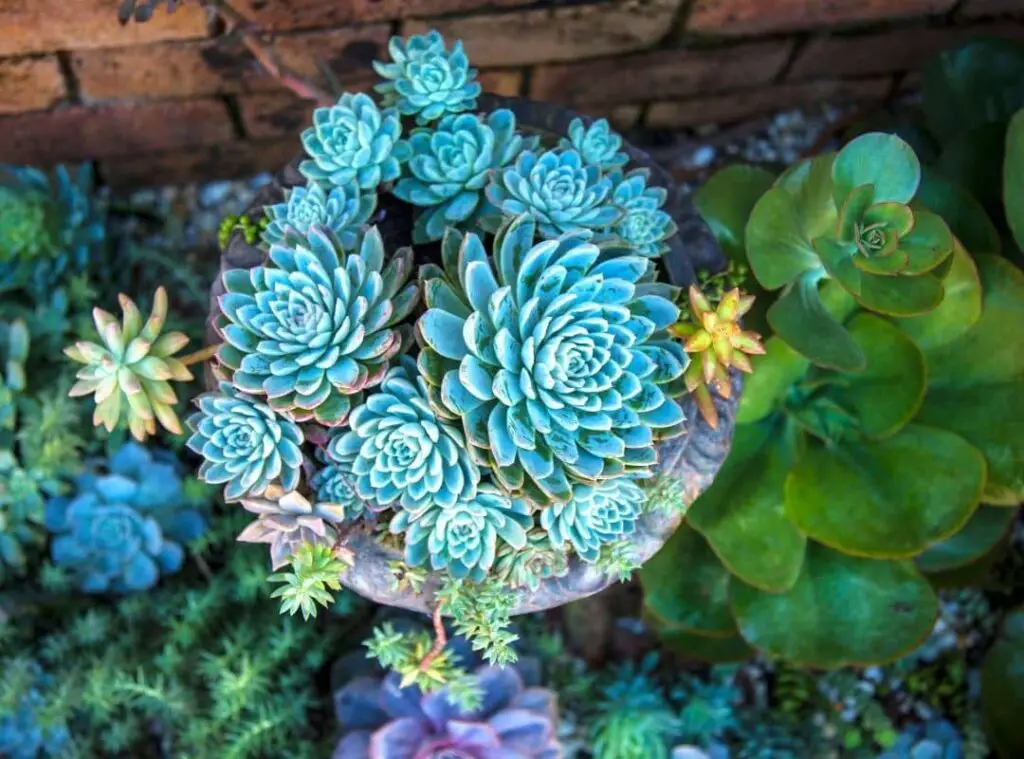
Zone 6a
A temperature range of -10 degrees Fahrenheit to -05 degrees Fahrenheit (-23.3 degrees Celsius to -20. 6 degrees Celsius) is the lowest temperature that zone 6a succulents could thrive in.
Some examples which could withstand the conditions in zone 6a are succulents such as Hylotelephium tatarinowii Sedum brevifolium, Phedimus sichotensis, Phedimus litoralis, Sedum debile, Phedimus middendorfianum f.striatus.
Zone 6b
The lowest temperature that zone 6b succulents could thrive would be -05 degrees Fahrenheit to 00 degrees Fahrenheit (-20.6 degrees Celsius to -17.8 degrees Celsius).
Phedimus middendorfianum f.striatus , Hylotelephium tatarinowii , Phedimus sichotensis , Sedum brevifolium , Hylotelephium cyaneum , Phedimus litoralis , Hylotelephium cauticola etc. are some examples for zone 6b succulents.
Zone 7a
The lowest temperature that zone 7a succulents could withstand would be 00 degrees Fahrenheit to 05 degrees Fahrenheit (-17.8 degrees Celsius to -15 degrees Celsius).
Some examples for succulents which thrive well in zone 7a are Phedimus middendorfianum f. striatus , Hylotelephium tatarinowii , Phedimus sichotensis , Hylotelephium cyaneum , Sedum brevifolium , Agave utahensis var eborispina( Ivory spines agave ), Sedum Sexanhulare (Tasteless stonecrop) Phedimus Selskanianaius, Sedum Jurgensenii
Zone 7b
Zone 7a succulents could thrive in 05 degrees Fahrenheit to 10 degrees Fahrenheit (-15 degrees Celsius to -12.2 degrees Celsius) and that is the lowest temperature that they can withstand.
Agave utahensis var eborispina( Ivory spines agave ), Sedum brevifolium ,Sedum Debile, Sedum Hemsleyanum (princess necklace ), Phedimus obtusifolius Viola pachysoma are some succulents which we could consider under zone 7b.
Zone 8a
The lowest temperature that zone 8a succulents could withstand is 10 degrees Fahrenheit – 15 degrees Fahrenheit (-12.2 degrees Celsius to -9.4 degrees Celsius).
Best examples for zone 8a are Phedimus obtusifolius , Sedum Hemsleyanum (princess necklace ), Viola pachysoma, Sedum diffusum (diffuse stonecrop). Agave applanata ( gray agave).Viola farkasiana , Sedum versadense
Zone 8b
A temperature range of 15 degrees Fahrenheit to 20 degrees Fahrenheit (-9.4 degrees Celsius to -6.7 degrees Celsius) is the lowest temperatures that zone 8b succulents could thrive in.
We could consider on succulents such as Hylotelephium Tatarinowii , Sedum Brevifolium (short lived stonecrop), Phedimus hybridus , Agave utahensis var eborispina( Ivory spines agave ) Phedimus litoralis as zone 8b succulents.
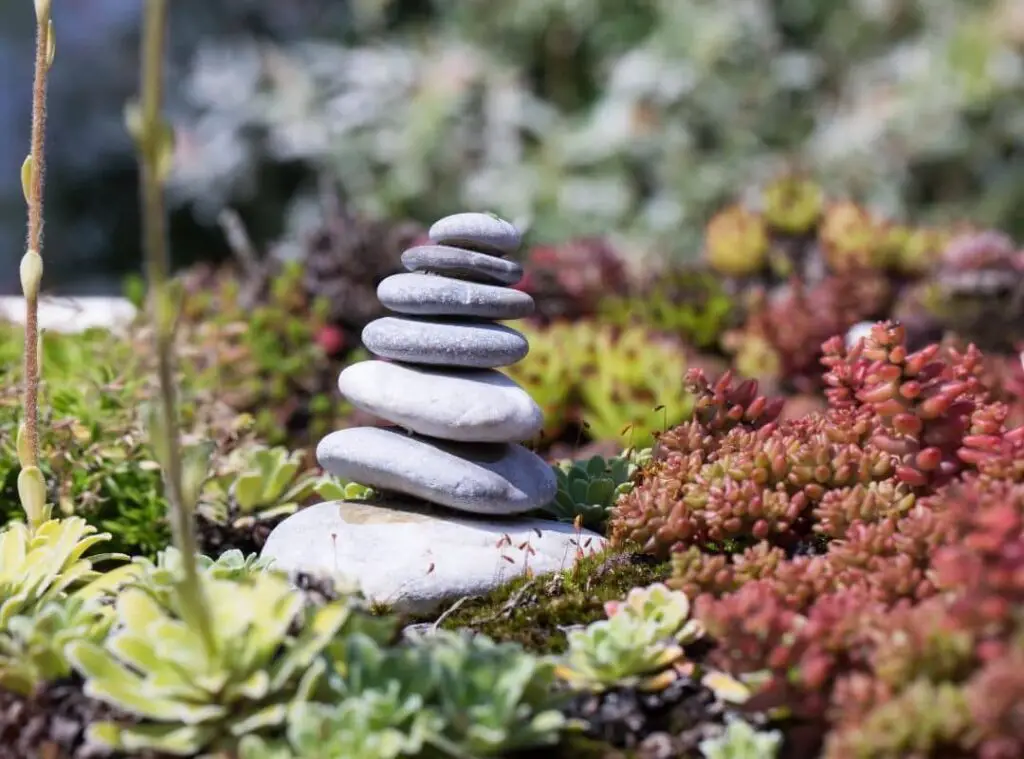
Zone 9a
Zone 9a could withstand a temperature range of 20 degrees Fahrenheit to 25 degrees Fahrenheit (-6.7 degrees Celsius to -3.9 degrees Celsius) and that is the lowest temperature they could survive .
Echeveria hearts delight, Echeveria penduliflora, Mammillaria sphaerica, Sedum Brevifolium (short lived stonecrop), Echeveria icicle, Phedimus litoralis , Agave durangensis , Mammillaria mystax are some fine examples which could thrive well in zone 9a.
Zone 9b
The lowest temperature that zone 9b succulents could thrive is 25 degrees Fahrenheit to 30 degrees Fahrenheit (-3.9 degrees Celsius to -1.1 degrees Celsius).
We could consider on succulents such as Echeveria hearts delight, Aloe komaggasensis (Komaggas coral aloe), Phedimus middendorfianum f.striatus, Mammillaria halbingeri , Euphorbia grandidens (Valeybush Euphorbia) Agave caymanensis , (Cayman Agave) Echeveria penduliflora as succulents which could thrive well in zone 9b.
Zone 10a
A temperature range of 30 degrees Fahrenheit to 35 degrees Fahrenheit( -1.1 degrees Celsius to 1.7 degrees Celsius) is the lowest temperature that zone 10a could survive.
We could consider on succulents such as Crassula Alice Hebert, Agave caymanensis, Haworthia Variegata, Aloe komaggasensis (Komaggas coral aloe), Echeveria hearts delight, Tylecodon pusillus , Mammillaria halbingeri, conophytum uviforme, Lithops werneri ( living stones ), cereus albicaulis etc. as zone 10a plants.
Zone 10b
The lowest temperature of zone 10b succulents could withstand is 35 degrees Fahrenheit to 40 degrees Fahrenheit (1.7 degrees Celsius to 4.4 degrees Celsius).
Haworthia Variegata, Aloe komaggasensis (Komaggas coral aloe), Echeveria hearts delight, Tylecodon pusillus Euphorbia grandidens, cereus albicaulis, Agave caymanensis , Aloe Saundersiae , Echeveria penduliflora, Tylecodon opelii etc. conophytum minutum ( Lesser dumpling), Lithops naureeniae (Living stone) are perfect examples which could thrive in such conditions in zone 10b.
Zone 11a
The lowest temperature range that zone 11a can withstand is 40 degrees Fahrenheit to 45 degrees Fahrenheit ( 4.4 degrees Celsius to 7.2 degrees Celsius).
Some fine examples for zone 11a are Haworthia Variegata, conophytum uviforme, Lithops werneri ( living stones ), Cereus albicaulis, Euphorbia grandidens, crassula Alice Herbert, Aloe saundersiae, Echeveria penduliflora, Mammillaria sphaerica, Lithops naureeniae (Living stone). Etc.
Zone 11b
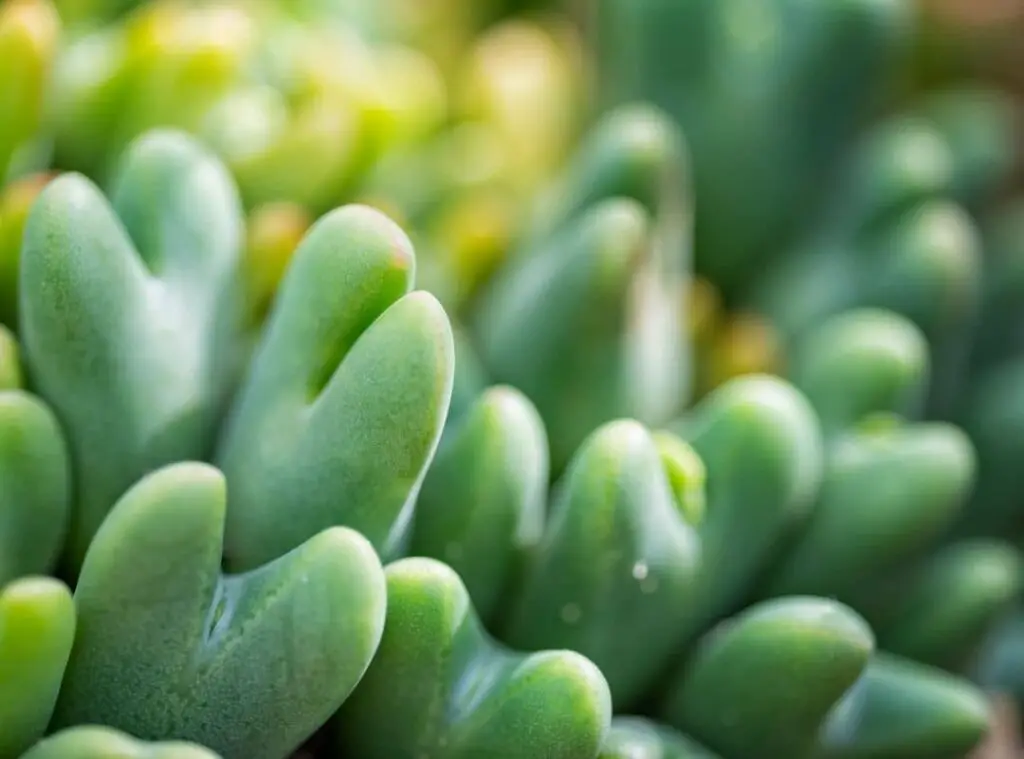
A temperature range of 45 degrees Fahrenheit to 50 degrees Fahrenheit ( 7.2 degrees Celsius to 10.0 degrees Celsius) is the lowest temperature that zone 11b succulents could thrive in.
Haworthia Variegata, Aloe komaggasensis (Komaggas coral aloe), Echeveria heart’s delight , Mammillaria halbingeri, Conophytum uviforme, cereus albicaulis, Aloe saundersiae, Haworthiopsis coarctata, Nammillaria sphaerica, Haworthia aristata, Tylecodon longipes etc. are some perfect succulents which could survive in such conditions in zone 11b.
Zone 12a
The lowest temperature that zone 12a succulents could withstand is 50 degrees Fahrenheit to 55 degrees Fahrenheit (10 degrees Celsius to 12.8 degrees Celsius).
Aichryson laxum (Tree of love ) is the best example for zone 12a as those plants will grow well in such conditions.
Zone 12b
A temperature range of 55 degrees Fahrenheit to 60 degrees Fahrenheit (12.8 degrees Celsius to 15.6 degrees Celsius) is the lowest temperature that zone 12b succulents can withstand.
We could consider on succulent such as Aichryson laxum ( Tree of love ) as the best example for this.
Zone 13a
The lowest temperature that zone 13a succulents could thrive in would be 60 degrees Fahrenheit to 65 degrees Fahrenheit (15.6 degrees Celsius to 18.3 degrees Celsius).
Zone 13b
Zone 13b succulents could withstand a lowest temperature of 65 degrees Fahrenheit to 70 degrees Fahrenheit (18.3 degrees Celsius to 21.1 degrees Celsius).
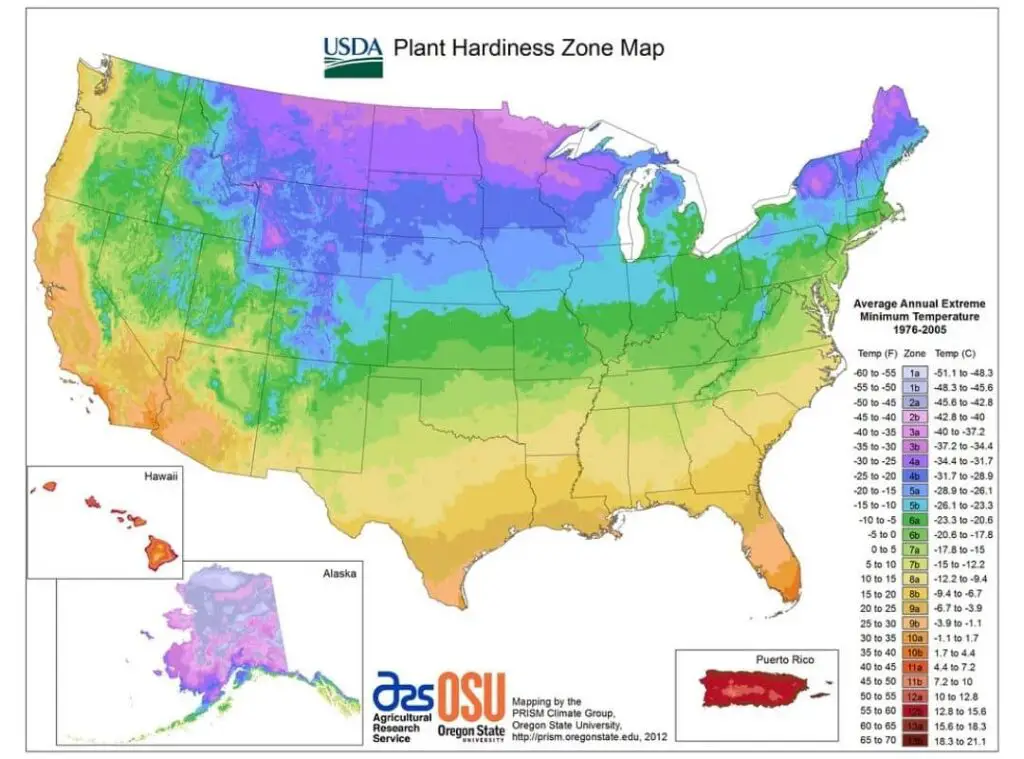
Why are USDA hardiness zones important?
It is vital to be aware of the USDA hardiness zones when growing both cactus and succulents.
When you are aware of the hardiness zones that will help you to be prepared for upcoming weather changes and to plan ahead accordingly.
Consequently it will help you to safeguard the good health of the plant. Consider that your succulent’s labelled hardiness zone is in contrast to the hardiness zone you live in, then it is very unlikely that those succulents will thrive.
Are USDA hardiness Zones changing?
USDA hardiness zones could change based on the temperature rise.
Apart from that, habitat shifts due to climate changes which are mainly caused by human behavioral activities could also impact on the USDA hardiness zones changing.
In fact, planting zones tend to move towards the north. If we elaborate further on this, the average coldest temperature of 1989 – 2018 has changed from 3 degrees Fahrenheit when compared to the average coldest temperature in 1951-1980.
Read Next: Conophytum Propagation Guide | 4 Effective Ways To Propagate |
